My friend had recommended the UXO Laos Visitor Center to me when we were in Thailand. So on our second day in Luang Prabang we set out to pay it a visit. We hoped for an eye-opening look at the most significant challenge facing Laos. Unfortunately, things weren’t destined to go as planned.
The UXO Legacy
During the Vietnam War, the USA dropped so many bombs on Laos that it now holds the title of the most bombed country in history. Part of the Ho Chi Minh Trail, used by the Vietcong to move between the North and South Vietnam, ran through Laos alongside a few other countries. In an attempt to disrupt the trail, the USA would carry out relentless bombing campaigns.
To make things worse, American bombers would offload unused bombs over Laos to ensure a safe landing when they returned from a mission. This practice increased the already astounding number of explosives scattered around the countryside.
It’s so bad that hiking in the country means risking your life, as it is extremely likely that you will come across an Unexploded Ordinance, or UXO for short. UXO essentially means any weapon left behind that hasn’t exploded yet. This could be cluster bombs from US airplanes, mines planted to protect areas and then forgotten about, or any number of explosive weapons left behind after the war.
Cluster bombs are the biggest problem in Laos, as they split apart into small metal balls, or “bombies”, to create several smaller explosions over a wider area. The only purpose in this design was to create as much destruction as possible. Bombies are the size of tennis balls, small enough for a child to hold in their hands. So many children, unaware of the danger, find these in the ground and decide to play with them.
The damage to the country is so great that it’s arguably why the country is less developed than other countries. Before land can be used for any kind of construction, from factories, to housing, to farming, will have to be cleared of bombs first. Even then, many can remain under the ground, only resurfacing when the ground is disturbed by rain or other kinds of weathering.
This is a basic overview of what I learned when travelling through Laos and South East Asia. Naturally I wanted to learn more, so an obvious destination was the UXO Laos Visitor Center in Luang Prabang. On our second day we took the time to walk there from our hotel.
Closed, but Not Forgotten
Unfortunately it wasn’t to be. When we arrived at the center we found that it would be closed for refurbishment for the whole time we would be in Luang Prabang.
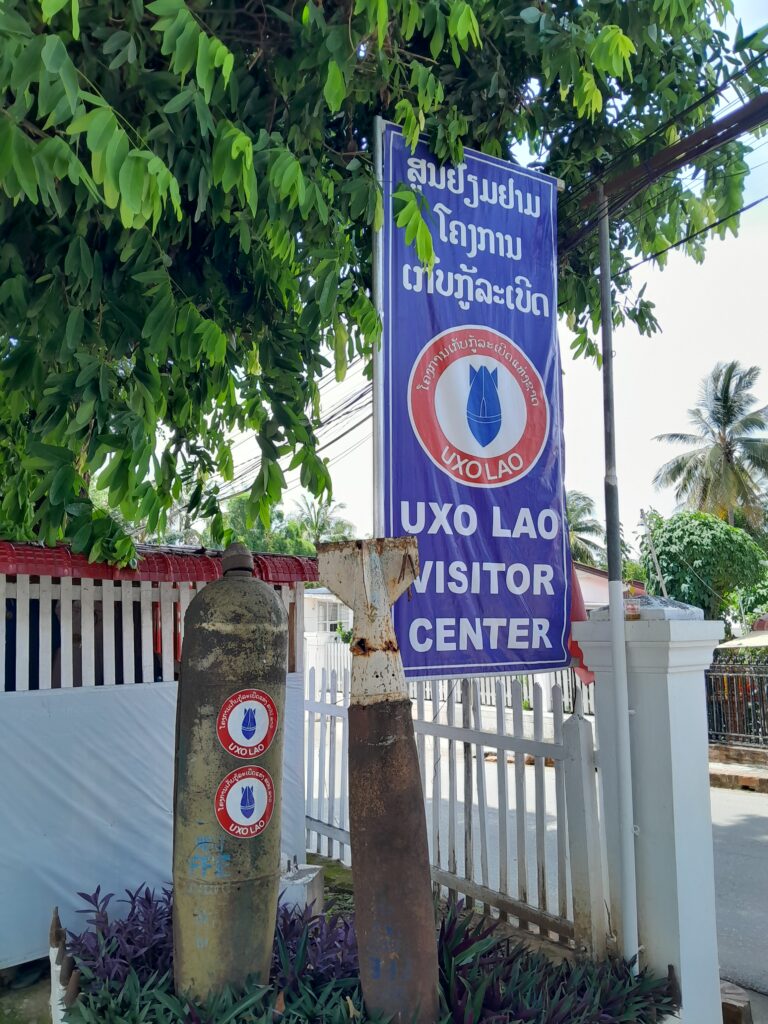
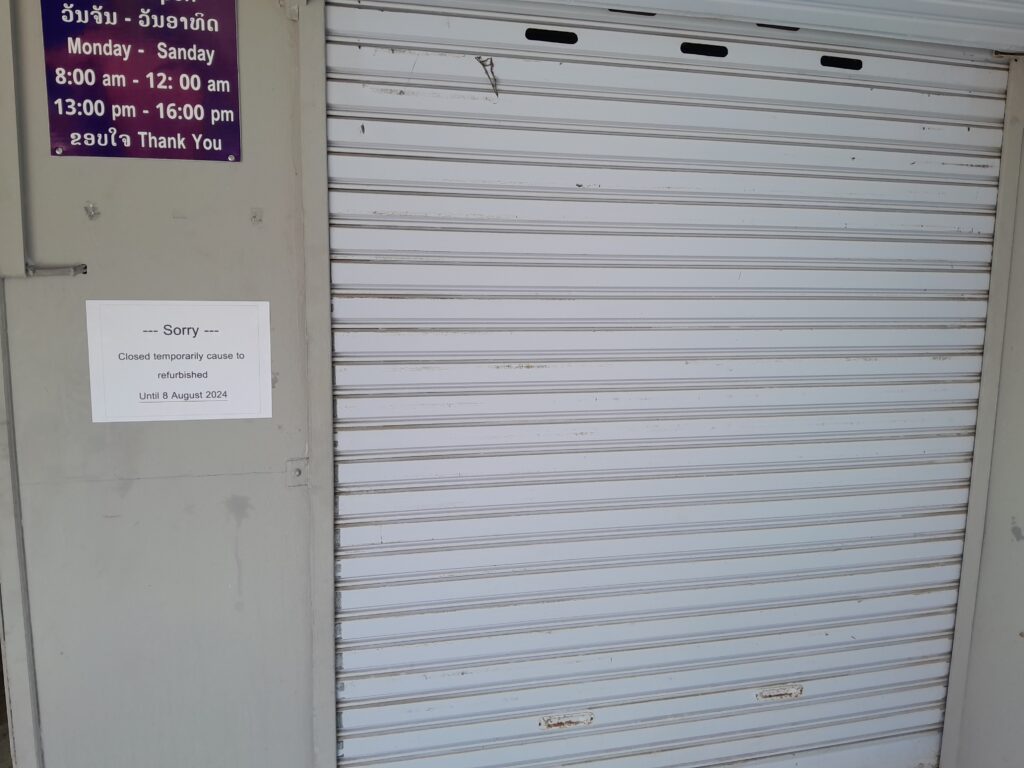
It wasn’t all for naught, though. We were still able to see some examples of (deactivated) bombs outside, as well as a map of potential bomb sites around the country. Though they were concentrated around the main cities, There were still many spread throughout the countryside and mountains.
Outside the museum we could see a chart indicating how many UXOs had been found and defused, as well as an estimation of how many were dropped during the war. Around 270 million bombies were dropped on Laos, and its estimated that around 30% didn’t explode on impact. That means that there are around 80 million bombies still in the country.
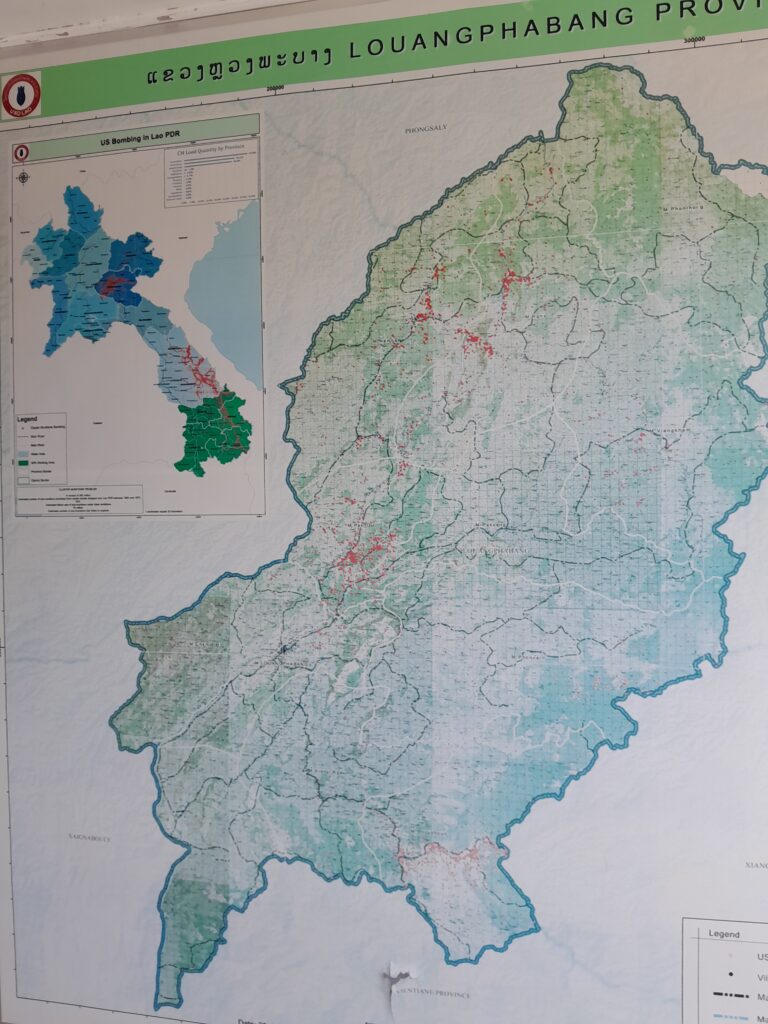
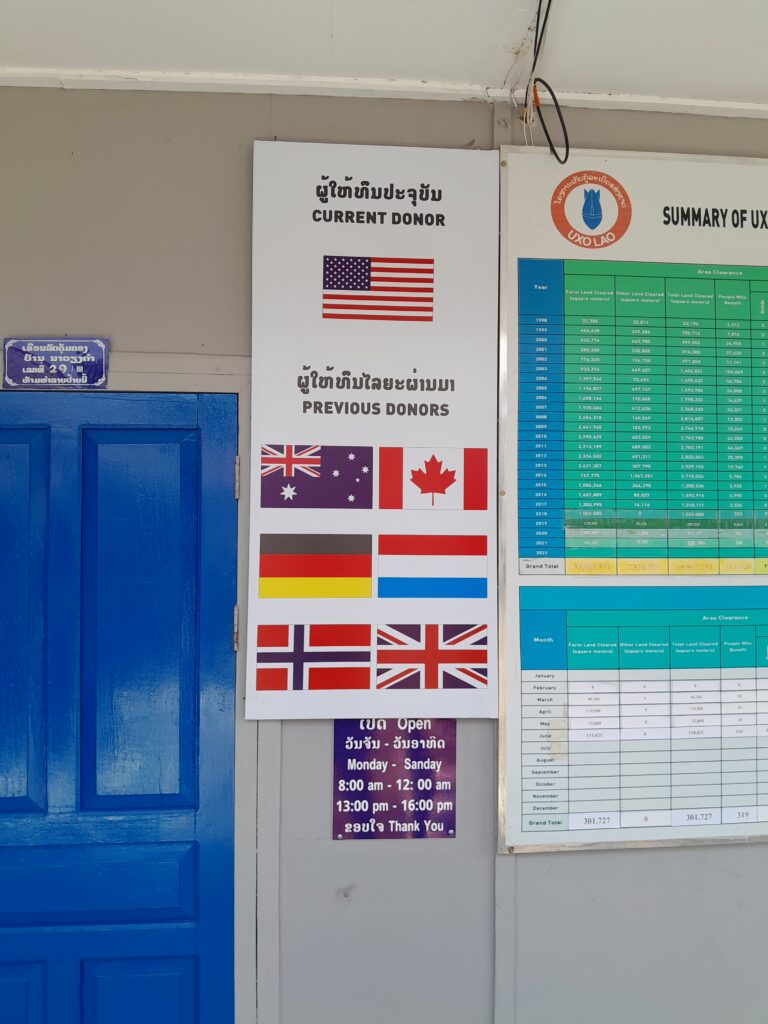
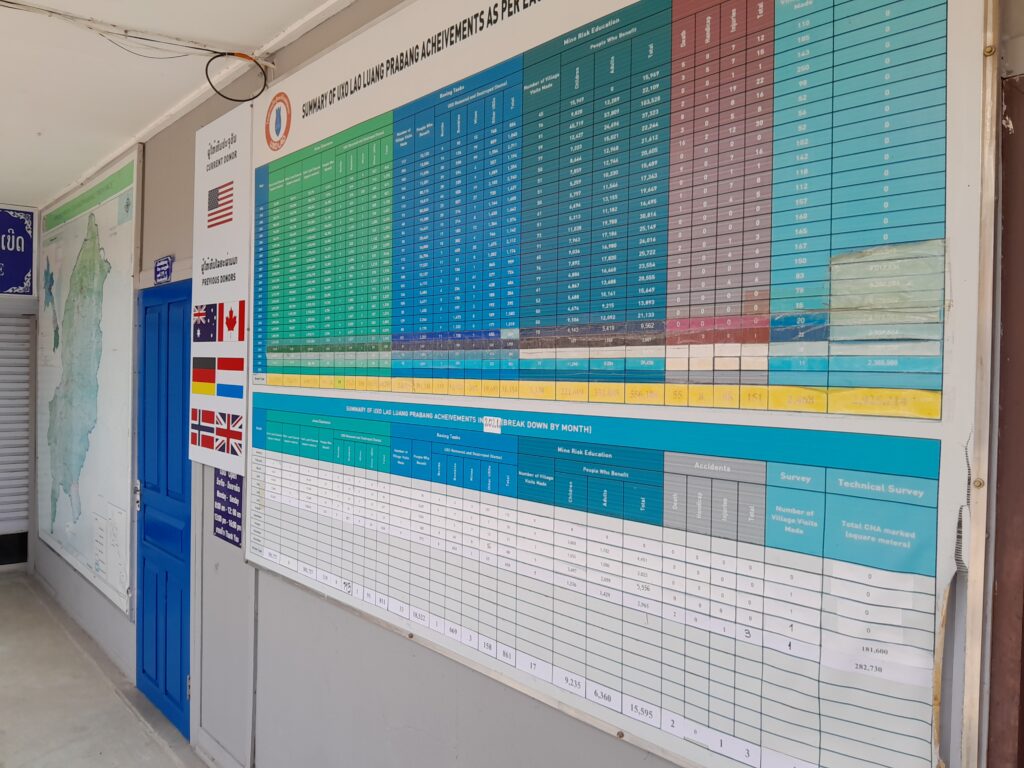
Less than 1 million of these have been removed from the country in the 50 years since the war. There’s still a lot of work to do, and some think it will take over 100 years to make the country safe again.
One thing I spotted on the chart was an entry for Education. It lists the number of villages visited, as well as the number of children and adults that benefit. It’s obvious now that education is of huge importance in the effort to clear the country. Armed with the knowledge of how to spot UXOs, and who to call if they find one, villagers can help themselves live in a safer country.
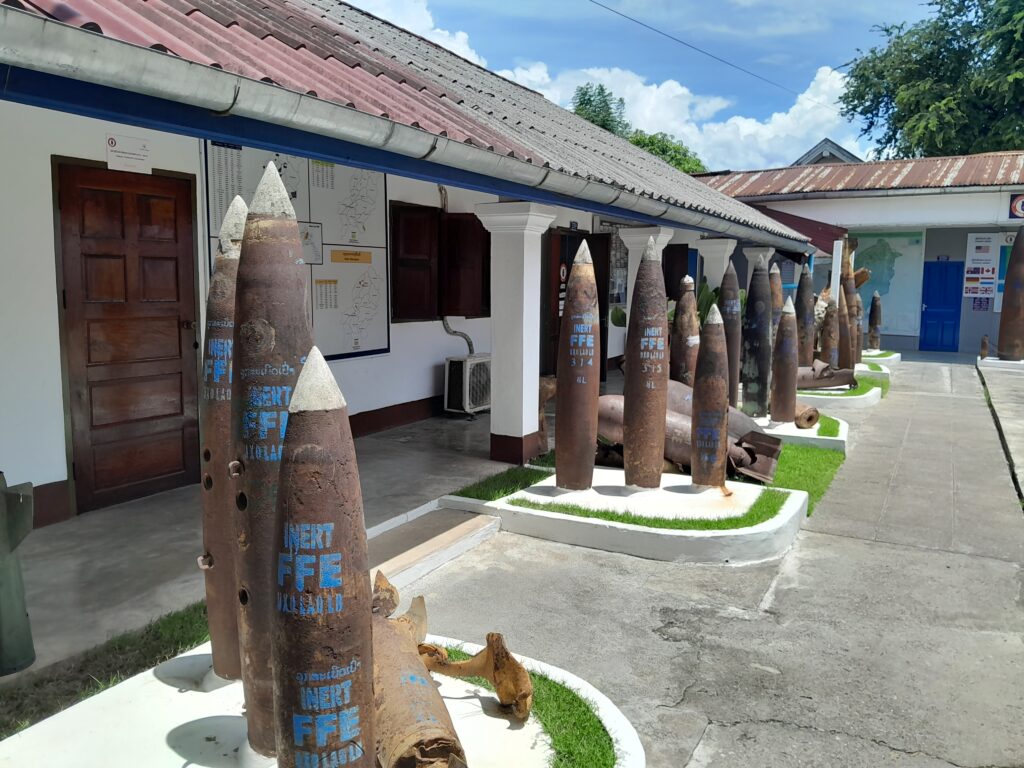
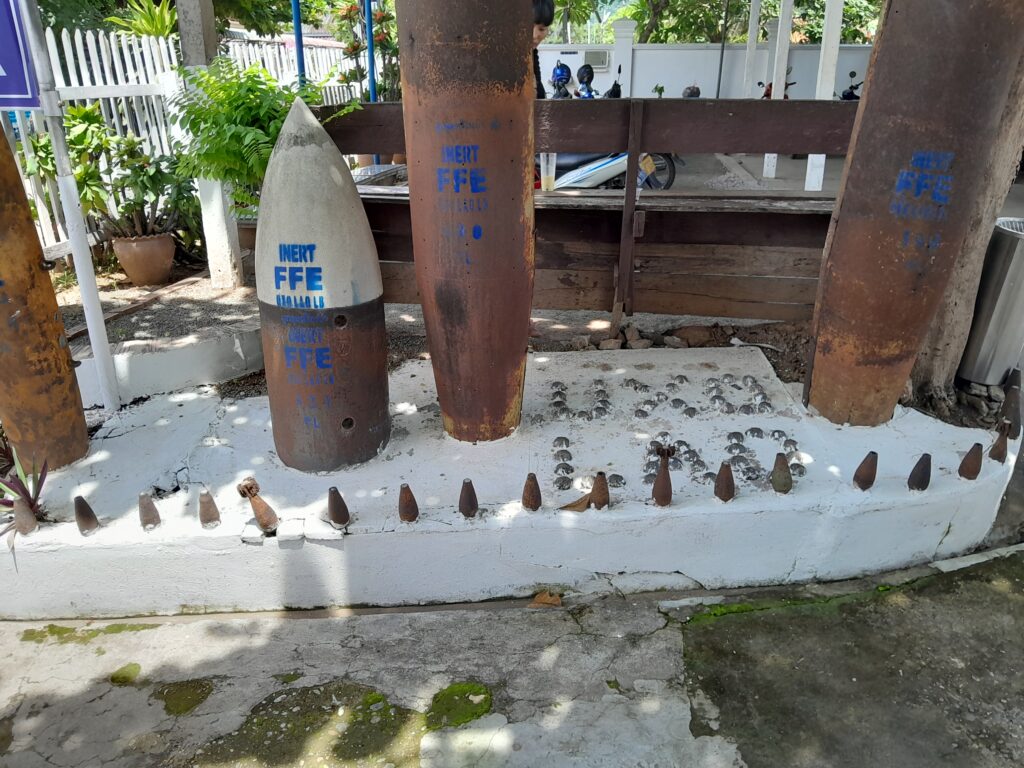
Despite us not being able to go inside the museum, we still learned a little more how the damage done to the country by the USA still affects Laotians to this day. As we left the center I reflected on what we had learned.
Many countries involved in the war now contribute funds and efforts to clearing the mines. But many who learn about Vietnam do not learn how it affected the surrounding countries. It is a forgotten side of America’s legacy in the peninsula, and the destruction it wrought in the name of colonialism. I wonder how different things would be if more people knew of the devastation this country had faced, and still faces today.




One thought on “UXO Laos Visitor Center (ish)”